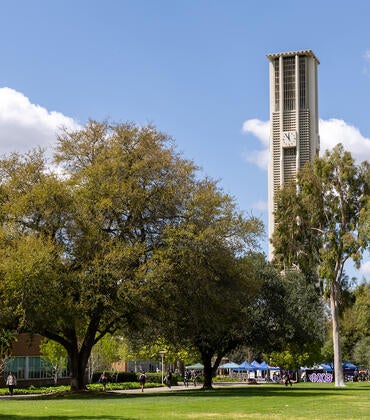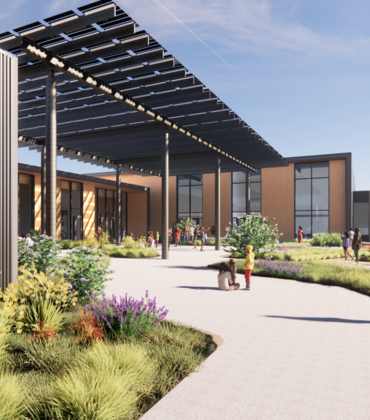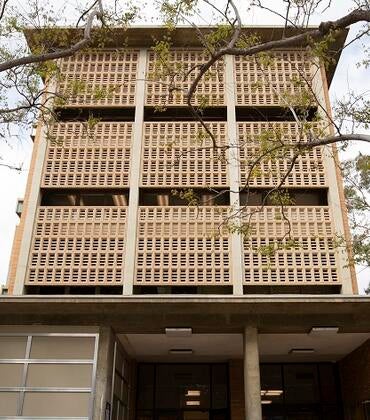UC Riverside plans to implement new measures this fall that reflect major changes in how it approaches campus safety.
They include a tiered-approach in which the UC Riverside Police Department will add a new category of non-sworn, unarmed safety personnel to respond to calls. Another addition will be behavioral health specialists trained to deescalate situations. UCR is on track to be among the first UC campuses to implement such changes.
The approach follows the creation of last year’s Health, Well-being, and Safety division that grouped the Police Department with Campus Advocacy, Resources & Education (CARE), Basic Needs, and the departments under Student Health & Wellness Services, which includes Student Health Services, Counseling and Psychological Services, The Well, Student Affairs Case Management, and the Student Disability Resource Center.
The reorganization follows recommendations of a 2021 Campus Safety Taskforce formed by Chancellor Kim A. Wilcox and the UC Community Safety Plan introduced by UC President Michael V. Drake. Those measures came in the wake of a national debate over policing, racial injustice, and social inequity after the killing of George Floyd.
Associate Vice Chancellor Denise Woods, who oversees the Health, Well-being, and Safety division, said bringing together the departments, which collaborated before, allows the campus to streamline access to resources for a wide range of needs.
“It gave us a holistic vision of how we would support our students,” Woods said. “We want to do what we can to create a culture of wellness for our campus community, and part of that is the integration of a robust ecosystem of resources for students, as well as raising awareness of these resources so that students know how to access them when needed.”
It moves the department away from a mindset of enforcement to one of guardianship, she and Interim Police Chief Anthony Frisbee said. It’s an approach that focuses on improving safety through prevention, intervention, education, and efficacy instead of enforcement, viewing the campus community as partners.
“The guardianship model reframes how we look at our mission and quite frankly it’s one in which our safety professionals look at defending the community through procedural justice rather than our primary effort of trying to control safety through enforcement,” Frisbee said. “That’s a big change.”
One of the major changes is the addition of four full-time campus safety responders, who will wear “softer” polo uniforms as nonsworn, unarmed safety professionals. They will respond to a wide range of issues such as skateboarding or bicycle safety violations, noise complaints, and building checks.
A second big initiative is the creation of the Student Well-being, Intervention and Follow-up Team, or SWIFT, which will be comprised primarily of behavioral and mental health professionals, counselors, and social workers. They will be the first to respond to calls involving a student in crisis.
Sworn officers will still be available to respond to such calls if they involve a threat to campus, Frisbee said. For instance, there may be situations in which officers also respond but maintain a distance until needed, he said.
“It changes the face how we provide and respond to public safety,” Frisbee said. “It’s the right professional for the right call.”
The department is hiring team members and campus safety responders, with both programs expected to start this fall.
The department will include 29 sworn officers and four non-sworn campus safety responders, with one responder working each shift 24 hours a day, seven days a week. At least five SWIFT members will be embedded to shifts, initially starting with just evening hours.
(UCR/Stan Lim)
Meanwhile, the existing Community Safety Ambassador program, made up of part-time student volunteers, will add the Highlander Emergency Medical Services group, a group of students with Emergency Medical Technician, or EMT, certification.
“We’re adopting these changes to be responsive to the needs of our campus community,” Woods said. “The main purpose of the SWIFT unit is to have professionals that arrive to the scene of a crisis, and to be less ‘triggering’ than the current standard practice, with a focus on compassion, empathy, and trauma-informed care.”
Frisbee said the tiered response approach will free up sworn officers to use their time more effectively on safety issues and will not diminish the department’s ability to respond to violent threats.
The department has already started making some changes. For example, when it comes to vehicle stops the priority is on safety issues such as driving under the influence or running a stop sign, instead of pulling over cars for minor violations.
The police department has also launched its revamped transparency dashboards, which will be updated monthly, increasing the amount of information and data easily accessible to the public. The interactive dashboards include budget figures, crime statistics including arrests and the age range and race of those arrested; demographics of the department such as the education, experience, and racial breakdown of officers; and use of force numbers.
Visitors to the site can also see how many complaints were filed against the department. In another change, those will now be investigated by another university department, such as the office of compliance, instead of by police. Frisbee said the dashboards will continue to be improved to provide useful data to the campus.
A new Campus Safety Accountability board will replace the Campus Community Advisory board, providing regular updates through reports and facilitating ongoing public dialogue.
Ultimately, the department hopes to show through transparency and working with the campus community that it’s committed to making changes, Frisbee said.
“We need to either maintain, earn, or regain trust from community members,” he said.



